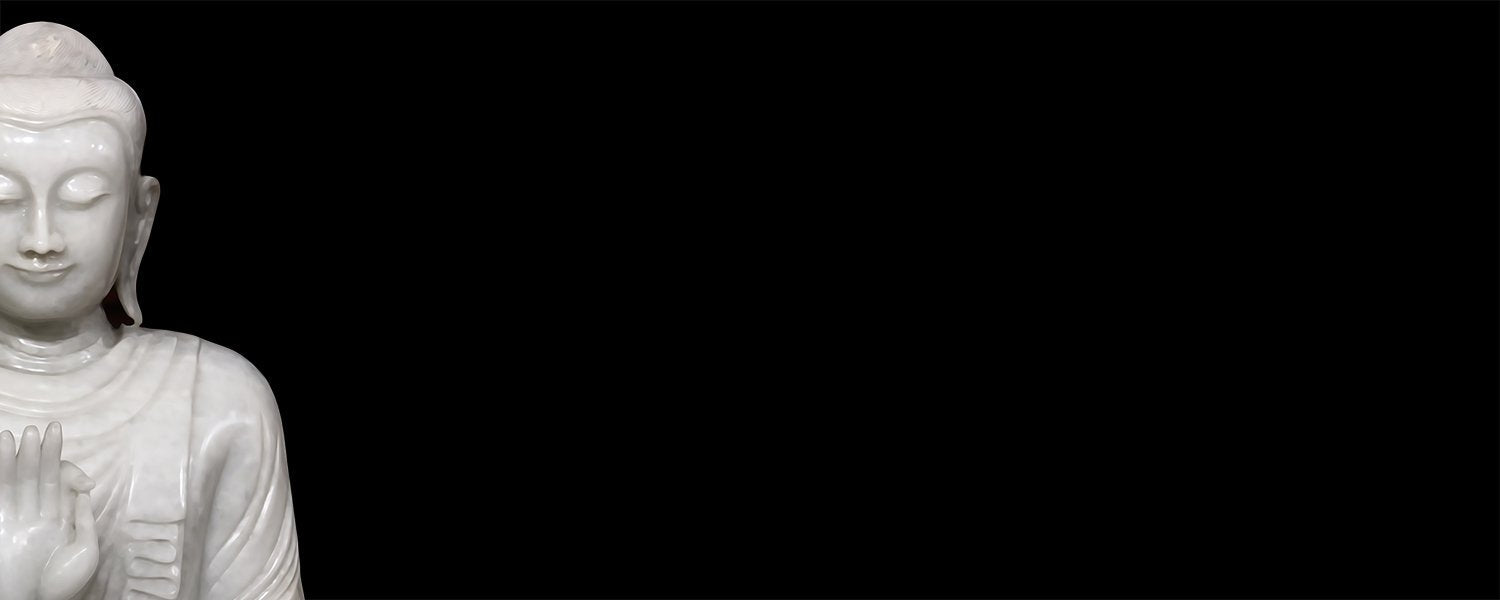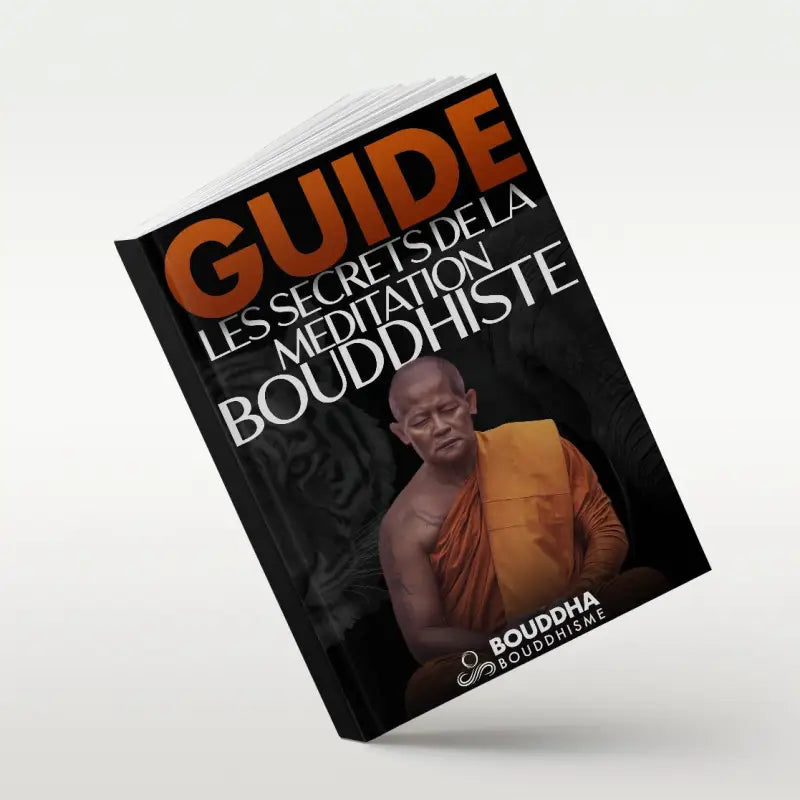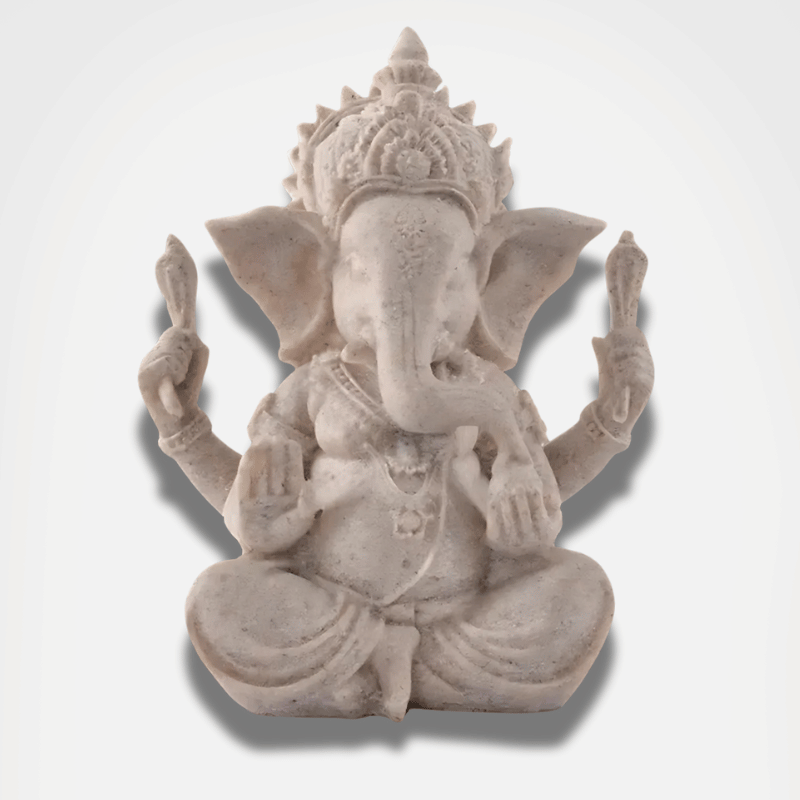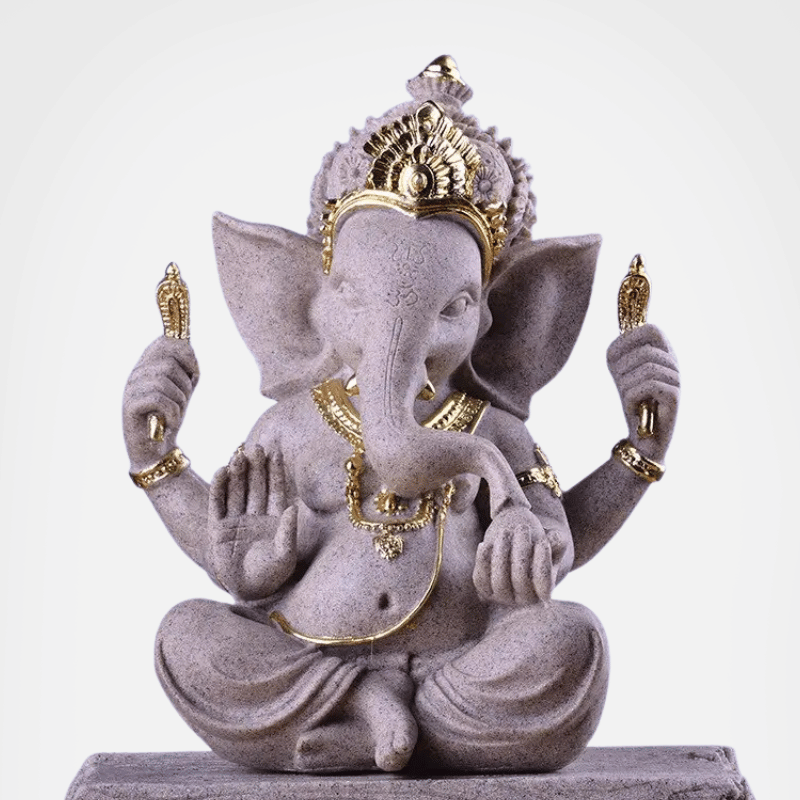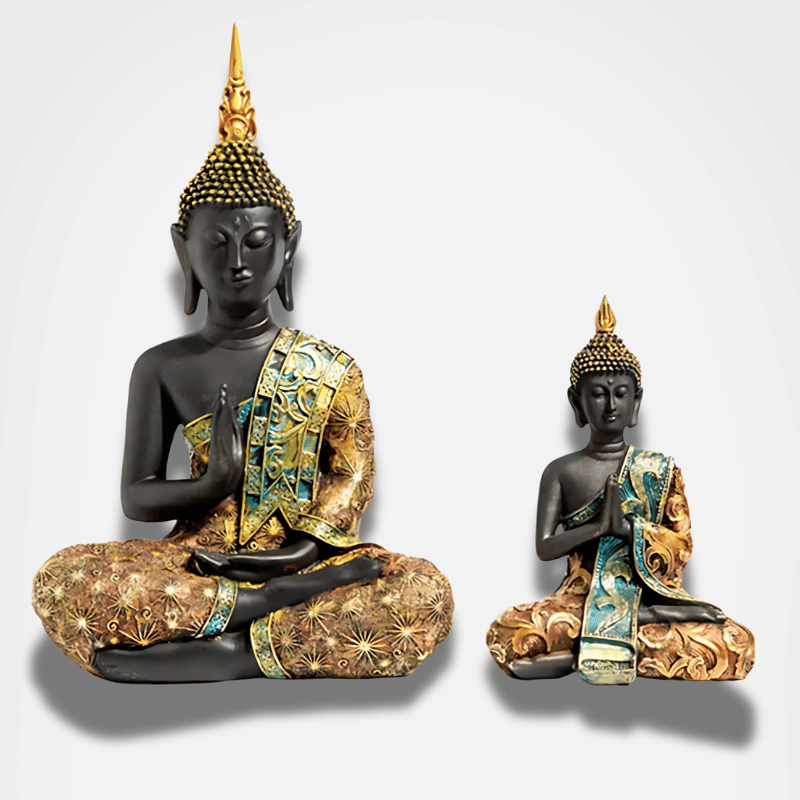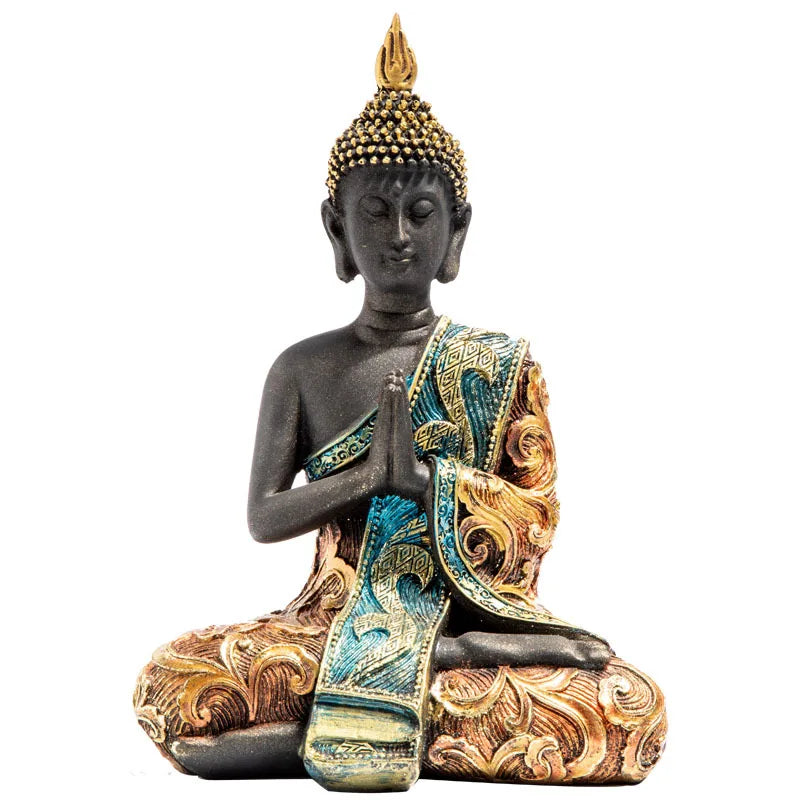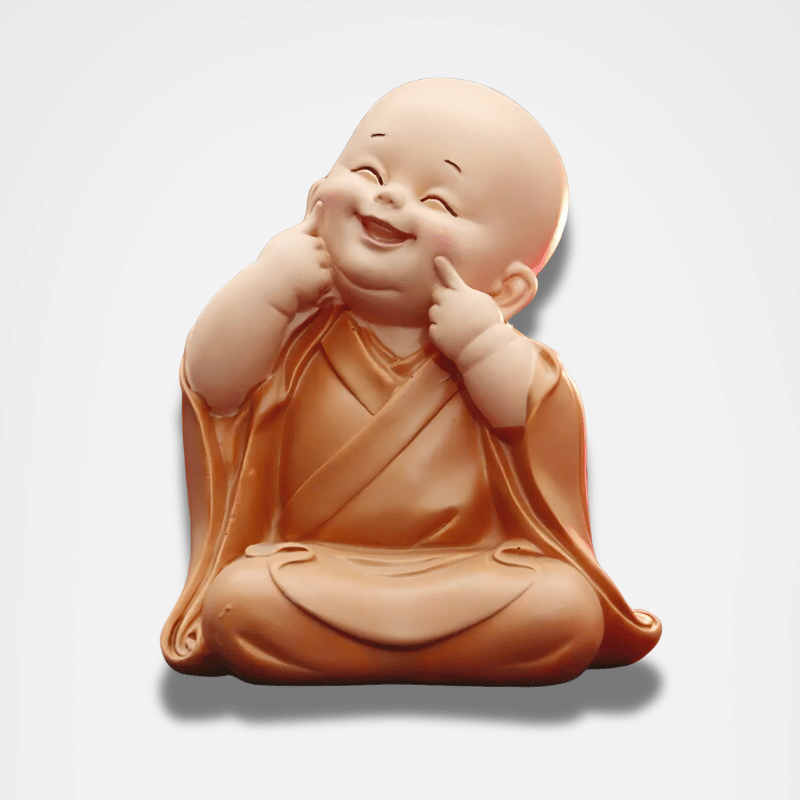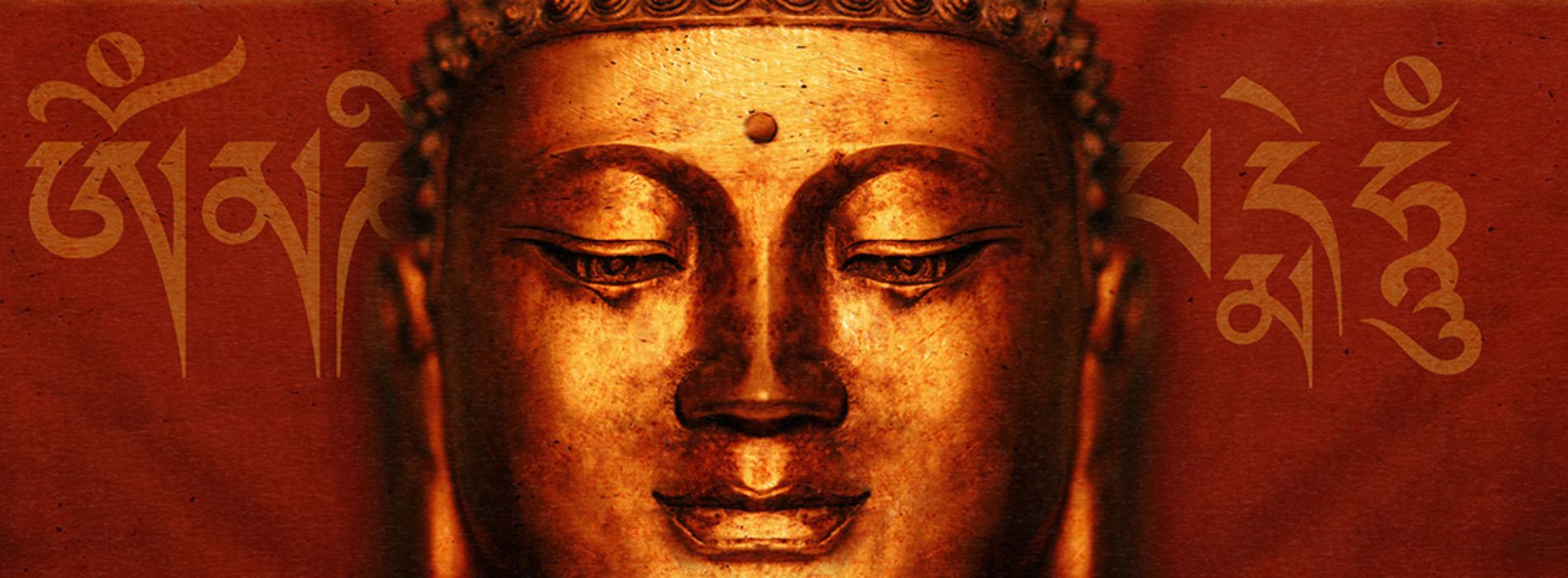You could say that the history of Buddhism began with a loss of innocence. Siddhartha Gautama, a young prince of the Shakhya clan in India, had been raised in a life of royal ease, sheltered from the misery and cruelty of the world outside the palace gates, distracted by sensual pleasures and lush life. But one day the fateful encounter with the real world took place and Siddhartha was shaken to the core.
The origin and teachings of Buddhism
There, in his own kingdom, not far from his gardens and delights, he met people suffering from sickness, old age and death; he ruminated on these things, deeply disturbed that such was the destiny of all beings. Then he met an ascetic holy man, a renunciant dedicated to liberation. The prince then undertook the great renunciation, abandoning his family, his fortune and his kingdom in pursuit of the path to liberation. The central and deep question that burned in Gautama was: "How to end suffering?"
He became a wandering ascetic, practiced yogic disciplines and meditation, studied with various teachers and attained great heights. elevated states of consciousness; but he still did not find the answer to his question. He practiced severe forms of asceticism, almost to the point of death by starvation, all for no gain. Finally, he sat under a bodhi tree, determined not to rise from meditation until he gained the insight he sought. Soon after, he attained enlightenment; he became the Buddha -- the Awakened One.
He had risen through different stages of meditative consciousness, he had seen all his past lives, and he had seen directly into reality, into the nature of existence and the causes of suffering and Renaissance. He wondered whether he should try to teach these ideas, so subtle and difficult for others to understand; perhaps it would be futile.
But ultimately he decided that at least some people would be able to understand; perhaps more importantly, they could be shown the way to arrive at these ideas themselves. He gave his first sermon to a few disciples in the deer park of Benares, then continued to wander and teach for the next forty-five years, until his death at the age of four. twenty years.
He was born in the 6th century BCE, at a time of great upheaval and political change in India; many were dissatisfied with the Vedic religion, and new teachings had emerged, including the Upanishads. The Buddha stood largely outside the Vedic tradition, criticizing many of its central teachings. Nevertheless, he had been influenced by this tradition and his teachings, in turn, would have a profound effect on later teachers in the Hindu tradition, such as Shankara; even in Hindu classics like the Bhagavad Gita, some reaction can be seen to Buddhist teachings.
But centuries later, the Buddha's influence would fade in India and spread to other Asian countries. Today, Buddhism has spread throughout the world. Various sects emerged as teachers reinterpreted and expounded the basic teachings of the Buddha. Buddhism can be considered a religion, a philosophy, a way of life, or all three; here we will mainly deal with Buddhism as a philosophical system.
Buddhist metaphysics
The Buddha's main concern was to eliminate suffering, to find a remedy for the pain of human existence. In this regard, he has been compared to a doctor, and his teaching has been compared to a medical or psychological prescription. Like a doctor, he observed the symptoms - the disease from which the human species suffered; then he would give a diagnosis – the cause of the illness; then he gave the prognosis - he could be cured; finally, he gave the prescription - the method by which the disease could be cured.
His first teaching, the Four Noble Truths, follows this model. First, the idea that “life is dukkha.” Dukkha translates as suffering, pain, impermanence; it is the unsatisfactory quality of life that is meant here - life is often beset with sorrow and difficulty, and even at its best it is never completely satisfying. We always want more happiness, less pain. But this "wanting more" is itself the problem: the second noble truth teaches that the pain of life is caused by "tanha" - our desires, our attachments, our selfishness in grasping for pleasure and avoid pain.
Is there anything else possible? The third noble truth says yes; complete liberation from attachment and dukkha is possible, freedom from pain and rebirth. The fourth noble truth tells how to achieve this liberation; it describes the Noble Eightfold Path leading to Nirvana, the total extinction of the pain of existence.
Another main teaching of Buddhist metaphysics is known as the Three Marks of Existence. The first is Anicca, impermanence: everything is transitory, nothing lasts. The second is Anatta, No-Self or No-Soul: human beings, and all of existence, are soulless and selfless. There is no eternal, unchanging part of us, like the Hindu idea of Atman; there is no eternal, unchanging aspect of the universe, like the Hindu idea of Brahman.
The whole idea of self is seen as an illusion, an illusion that causes immeasurable suffering; this false idea gives rise to the consequent tendency to try to protect the self or ego and preserve its interests, which is futile since nothing is permanent anyway. The third mark of existence is that of Dukkha, suffering: all of existence, not only human existence but also the highest states of meditation, are forms of suffering, ultimately inadequate and unsatisfactory.
The three brands
The three marks of existence can be considered as the basis of the four noble truths above; in turn, the three marks of existence can be seen as arising from an even more fundamental Buddhist theory, that of Pratityasamutpada: Dependent Origination, or Interdependent Co-Creation. This theory says that all things are cause and are caused by other things; all existence is conditioned, nothing exists independently, and there is no First Cause. There was no beginning to the chain of causation; it is useless to speculate on how phenomenal existence began. However, it can be ended, and this is the ultimate goal of Buddhism - the ultimate liberation of all creatures from the pain of existence.
We sometimes speak of this causality as a circular connection of twelve different factors; if the chain of causation can be broken, existence ends and liberation is achieved. One of these factors is attachment or craving, tanha, and another is ignorance; these two factors are highlighted as the weak links in the chain, the place to take a break. To overcome selfish desire, we cultivate the heart through compassion; to eliminate ignorance, we cultivate the mind through wisdom.
Compassion and wisdom are twin virtues in Buddhism, and are cultivated through ethical behavior and meditation, respectively. It is a process of self-discipline and personal development that emphasizes the heart and mind equally, and emphasizes that working together is necessary for enlightenment.
If Buddhism can be considered a process of personal development, one may wonder what a person is, if not a soul or a self. Consistent with ideas of dependent origination, Buddhism views a person as a changing configuration of five factors, or “skandhas.” First there is the world of physical forms, the body and all material objects, including the sense organs. Second, there is the sensation or feeling factor; here are the five senses as well as the mind which, in Buddhism, is considered a sense organ.
The mind senses thoughts and ideas in the same way that the eye senses light or the ear senses air pressure. Third, there is the factor of perception; here is the faculty which recognizes physical and mental objects. Fourth, there is the factor variously called mental impulses or formulations; here is will and attention, the faculty of will, the strength of habits.
Finally, there is the faculty of consciousness or conscience. In Buddhism, consciousness is not something distinct from other factors, but it interacts with them and depends on them for its existence; there is no birth of consciousness without conditions. Here we do not see the person's identity as a constancy, but rather as an assortment or ephemeral and changing process of various factors that interact with each other. One of the major goals of Buddhism is to first become aware of this process and then eliminate it by eliminating its causes.
This process does not end with the dissolution of the physical body at death ; Buddhism assumes reincarnation. Even though there is no soul to continue after death, the five skandhas are considered to continue, fueled by past karma, and resulting in rebirth. Karma in Buddhism, as in Hinduism, arises from voluntary action and has positive or negative effects in this or a future life. Buddhism explains the karmic mechanism a little differently; It is not the results of the action itself that result from karma, but rather the state of mind of the person performing the action.
Again, Buddhism tends to focus on psychological insights; The problem with bad or selfish action is that it shapes our personality, creates ruts or habitual patterns of thinking and feeling. These patterns in turn translate into the effects of karma in our lives.
Many other metaphysical questions were asked of the Buddha during his life; he didn't answer them all. He avoided more abstract and speculative metaphysical reflections, and discouraged questions such as obstacles in the path. Questions such as what is Nirvana, what preceded existence, etc. were often met with silence or what may have seemed a mysterious darkness. Asked what happens to an Arhant, an enlightened Arhant, when he dies, the Buddha is said to have replied: "What happens to the bird prints in the air?" Nirvana means 'extinction' and he compared the death of an arhant to the extinction of a flame when the fuel (karma) runs out. Obviously, he felt that many of these questions stemmed from false self-attachment and distracted from the main goal of eliminating suffering.
The path to liberation: the Buddhist way of life

The Buddha wanted his philosophy to be a practical philosophy, aiming at the happiness of all creatures. As he described his metaphysics, he did not expect anyone to accept it on faith, but rather to verify their understanding for themselves; he always emphasized clarity and understanding. To achieve this, however, requires a disciplined life and a clear commitment to liberation; the Buddha outlined a clear path to the goal and also made observations on how to live life wisely.
The heart of this teaching is contained in the Noble Eightfold Path, which covers the three essential areas of Buddhist practice: ethical conduct, mental discipline ("concentration" or "meditation"), and wisdom. The goal is to cultivate both wisdom and compassion; then these qualities together will ultimately achieve enlightenment.
The path is traced in eight steps, but one can practice all the steps simultaneously, since they work together.
The first two steps or factors constitute Wisdom. Right understanding (or right vision) is the understanding of true reality, as seen in Buddhist teachings; it's not just an intellectual understanding, although that helps. Rather, it is a matter of direct insight and penetration into the nature of things. Good thinking (or good intentions) is that state of mind which is selfless, detached and free from malice; that generosity of spirit which extends loving kindness to all beings.
The next three steps on the Eightfold Path constitute ethical conduct. Good speech involves refraining from lies, foul or malicious language, senseless gossip, slander or backbiting that can cause disagreements. You must speak a gentle, kind, helpful truth, or not speak at all. Right action requires refraining from killing and from all violence, theft, dishonest practices, intoxicating drink and inappropriate sexual behavior. A good livelihood means refraining from any occupation that harms others, such as weaponry, butchering animals, or selling alcohol. Career should also develop one's talents, overcome ego by joining in a common cause and provide what is necessary for a dignified existence - basic comforts and necessities, but not ostentatious luxuries.
The last three steps
The last three steps of the path are those that promote mental discipline. Right effort is the willingness to cultivate healthy states of mind and eliminate bad or undesirable ones. Mindfulness (or attention) involves being very aware of the processes involved in daily life, those of the body, sensations, mind and the experience of thoughts and ideas.
Mindfulness is practiced in Buddhist forms of meditation like vipassana, through techniques like observing breathing and bodily sensations. Good concentration refers to the progressive stages of dhyana (this is closer to what is called meditation in most Hindu traditions). In this discipline, the mind is gradually cleared of passionate desires, then of thoughts, and finally of feelings of joy, until only pure consciousness remains, in a state of perfect calm and equanimity. .
Other teachings speak of the four friends and the five obstacles that one encounters along the path; these are qualities in the heart that can help or distract from the process. The four friends are: loving-kindness, compassion, sympathetic joy and equanimity. Loving kindness is universal love for all beings, without distinction. Compassion is the ability to empathize with others, to feel what they feel. Sympathetic joy is the quality that takes pleasure in the happiness of others.
Equanimity is a calm acceptance of everything that happens, based on the understanding of the impermanence of all things; in the end, the only thing that really matters is liberation, so the vicissitudes of life don't really mean anything.
The five obstacles are: sensual desire, ill will, laziness and torpor, restlessness and worry, or distraction, and skeptical doubt. Everyone has these obstacles in common, so it's important to find ways to eliminate them; they are like toxins or weeds that prevent the cultivation of these essential qualities of self-discipline and obstruct our liberation.
The teachings of Buddha
The Buddha's teachings on ethics and quality of life also extended to the social and political domain. He was ahead of his time in many ways; viewing all people as equal, he rejected the caste system and openly encouraged women to become students and teachers. He taught that governments had a responsibility to lead by example, to teach people ethics and to eliminate poverty by giving them the opportunity to become prosperous.
He was clearly opposed to all forms of war and taught that violence can never create security. In keeping with these teachings, Buddhism is rare among the world's religions in that its followers have never attempted to spread their beliefs through the use of force. Unique among victorious rulers, the Buddhist emperor Asoka in the 3rd century BCE renounced violence and war, and placed Buddhist ethical virtues at the center of his rule.
If one considers the Buddhist path as a philosophy, we can consider its epistemology: certain assertions of knowledge have been made, but how can we know if they are true? As noted above, the Buddha himself never asked anyone to accept unproven claims about faith, and in fact discouraged them from doing so. He held that his teachings could be verified by direct insight and reasoning, by anyone willing to consider them and follow the necessary path of self-discipline.
Starting from a few basic assumptions, such as impermanence and dependent origination, he derived a complex and coherent system of philosophy that has persisted for centuries. Later teachers validated his claim that others could achieve the same ideas, and they developed his basic teachings with impressive intuitive depth and intellectual rigor.
In this way, the Buddhist teaching has itself become a kind of interactive and evolving process, much like his idea of pratityasamutpada. However, the end goal is always Nirvana, which is an experience that ultimately surpasses all concepts and languages, even beyond Buddhist teachings. Ultimately, even attachment to Dharma, Buddhist teaching, must be abandoned like any other attachment. Tradition compares teaching to a raft on which one crosses a fast river to get to the other side; once on the other bank, it is no longer necessary to carry the raft. The distant shore is Nirvana, and it is also said that when one arrives, one sees very clearly that there never was a river at all.


